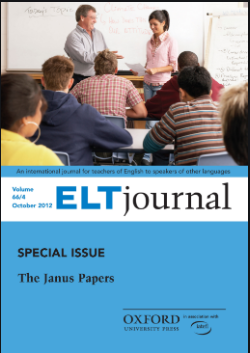How to avoid predatory journals
Willy A Renandya
‘It is a jungle out there’, says a colleague who has just joined academia. ‘There’re hundreds if not thousands of journals in our field and new journals are coming out practically every week’.
He goes on: ‘I hear that many of these journals are probably predatory. They look legitimate, but are actually bad journals. In fact my university has issued a warning that staff who publish in predatory journals may need to retract their articles and face academic and administrative consequences’.
Questions such as “what is a predatory journal? How do we know whether a journal is predatory or not? What can we do to avoid publishing in bad journals” are becoming more common these days and there is a growing concern among early career researchers that they may end up publishing their research papers in a bad journal.
Yes, people can now turn to websites that provide an extensive list of suspected predatory journals/publishers such as this one: https://tinyurl.com/upyq9h2. However even the most up-to-date website can’t possibly keep up with the rapidly increasing number of new journals that appear every day.
So rather than relying solely on information available on the Internet, a simple rule-of thumb can help us considerably reduce the likelihood of publishing in a predatory journal.
Here’re Willy’s 3 rules of thumb. Consider publishing your paper in a journal published by:
1. Professional Associations in our field e.g., ASIATEFL, CamTESOL, IATEF (International Association of Teachers of English as a Foreign Language), JALT (Japan Association for Language Teaching), KATE (Korea Association of Teachers of English) MELTA (Malaysia English Teachers’ Association), TEFLIN Journal (Teaching English as a Foreign Language in Indonesia), ThaiTESOL and TESOL (USA). It is safe to publish your papers in journals published by these associations. 
2. Educational institutions e.g., universities and language centers. Examples include the RELC Journal, PASAA (Chulalongkorn University Language Institute, Thailand), LEARN (Thammasat University, Thailand), IJAL (Universitas Pendidikan Indonesia), Reading in a Foreign Language (University of Hawaii, Manoa).

3. Mainstream publishing companies in our field. Some of the most well-known journal publishers include Cambridge University Press, Elsevier, Oxford University Press, Routledge, Springer, Wiley-Blackwell, 
Always do your diligence before you send your research paper to a journal. Consult your senior colleagues for information about the reputation of the journal. You can also check with your other professional colleagues from other countries.
Or if you are a member of a FB professional development forum such as Teacher Voices, you can seek the opinions of its members about the standing and reputation of the journal. To become a member, click here.
If you are aiming to get published in a legitimate, Scopus-Indexed journal, you may find my list of Scopus journals useful.
Remembers, a mistake can be costly to you and your organization. Publishing in a predatory journal may dent your credibility as an academic, harm your promotion prospect (or even career) and the reputation of your university.
More reading
Understanding Academic Publishing: Tips for Emerging Scholars
Stuck in a Rut? Tips for Improving Academic Impact
How to grow our research impact


That’s not necessarily true. Many universities do not necessarily look at top-tier journals for publications.
A very beneficial information. Thanks for sahring pak Willy
Thank you, Willy, that is more than helpful. And you are absolutely right by not picking out journals that might be dodgy (you’ve done that elsewhere), but reminding us to look at the positive features that we should be searching for. This requires a bit of re-framing, but I’m all for it!
Imbalance between supplies and demands: Researchers want fast publication as required by the institution while it takes a long time to publish a single article (by rule, submitting an article to more than one journal is not allowed). It is like letting the head but holding the tail. Ametabaaa
It’s very practical ways… thanks